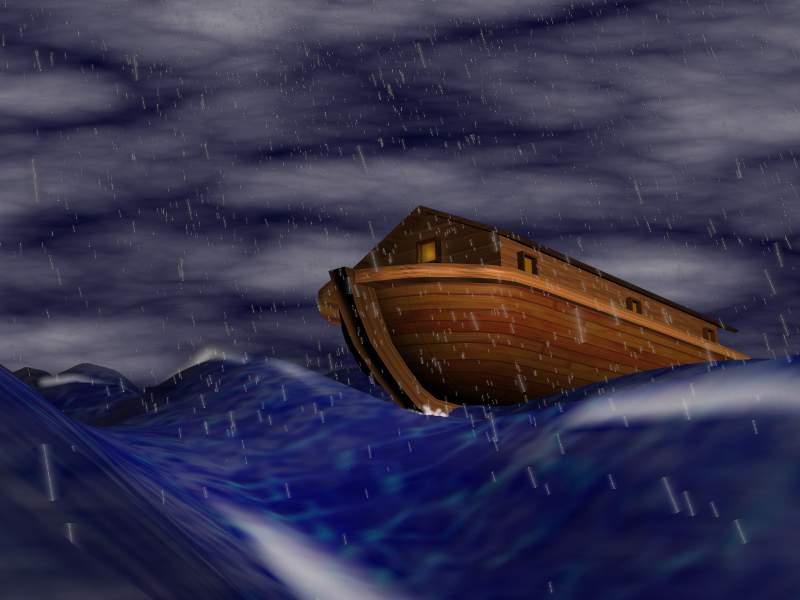Post Author: Bill Pratt
 In verses 5-7 in chapter 6, we learn that God is deeply grieved by the wickedness of mankind. Since the days of Adam and Eve, mankind has become more and more sinful. The wickedness has become so extreme that God decides he will exterminate the entire human race. Only one family will escape his judgment: the family of Noah.
In verses 5-7 in chapter 6, we learn that God is deeply grieved by the wickedness of mankind. Since the days of Adam and Eve, mankind has become more and more sinful. The wickedness has become so extreme that God decides he will exterminate the entire human race. Only one family will escape his judgment: the family of Noah.
Why is Noah to be spared from the impending flood? “Noah was a righteous man, blameless among the people of his time, and he walked with God.” The answer is simple: Noah obeyed God, and this is what God desires from human beings.
In verses 11-22, Noah receives detailed instructions from God on how to build the ark that will house his family and the animals that God will spare from the flood. The details are provided by the author to demonstrate the meticulous obedience of Noah. Noah is an example to the reader of how a person is to follow God.
In verse 22, we read, “Noah did everything just as God commanded him.” The fact that Noah was spared from the flood because he did as God commanded is repeated three more times in chapter 7 in verses 5, 9, and 16. Obedience to God is a central theme for the book of Genesis and the entire Pentateuch.
In chapter 7, the flood begins and Noah’s family is safe inside the ark. God gives specific instructions about taking extra “clean” animals on board the ark so that Noah’s family will not have to eat “unclean” animals during the flood. These instructions foreshadow the instructions by God to bring unblemished animals to be sacrificed at the tabernacle constructed by the Israelites as they wandered the desert for 40 years.
Remember that Genesis 7 was most likely given to the Israelites during the 40 years in the wilderness, so it is important to consider how they would have heard the account of Noah, given their experience in the wilderness. Likewise, the forty days and forty nights of rain parallel the forty years in the wilderness.
As the flood is described, we don’t hear about those who perish until verse 21 of chapter 7. Here we are reminded of the animals and humans that were killed, and that only Noah’s family and the animals on the ark are saved.
In chapter 8, the inhabitants of the ark are finally able to emerge. Verse 1 reminds us that God remembered Noah and sent a wind over the waters so that they would recede (reminiscent of the parting of the Red Sea). Noah must wait for God to act before the ark rests on dry land and everyone can exit.
Theologian John Sailhamer notes, “The image that emerges from this narrative is that of a righteous and faithful remnant patiently waiting for God’s deliverance.” Henceforth, the Flood, in the Bible, symbolizes God’s judgment of sin, and Noah symbolizes the salvation of the faithful.